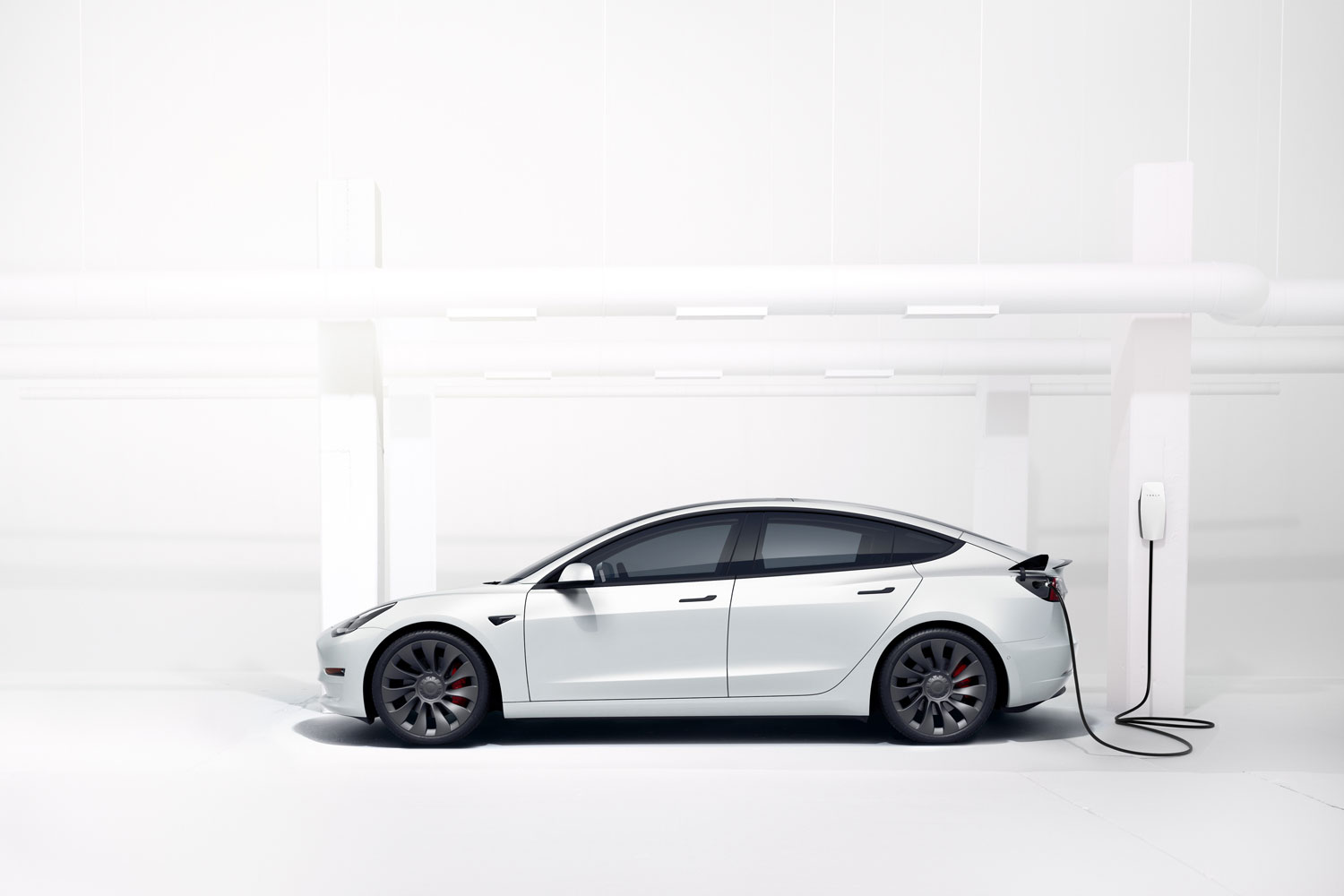How to Unlock a Tesla if the Battery Dies
Here are some tips for accessing your Tesla if its conventional battery loses its charge.
 Tesla
Tesla
It might seem counterintuitive that a vehicle with battery-powered electrical engineering could become immobilized because of a dead battery. But while Tesla's popular electric powertrains use large, lithium-ion battery packs to power their drivetrains, like any car, Teslas need a conventional 12-volt battery to power some accessories, such as door locks.
If you are in an unfortunate situation where you can't access your Tesla because of its weak or depleted 12-volt battery, here are some quick fixes.
The Other Battery in Your Tesla
Your Tesla's extended range and cruising prowess come from a powerful and sizable lithium-ion battery pack. But to run the car's electric accessories and basic functions — including the door locks — a Tesla still uses a traditional 12-volt battery, like many cars on the market.
Just as old-fashioned metal keys were replaced by electronic key fobs, key cards, and smartphone/app-based entry tools in most modern cars, if your Tesla's 12-volt battery dies, you won't be able to unlock a Tesla, open its doors, liftgate, or frunk using its key fob, or mobile app.
How to Boost a Tesla Model 3 and Model Y's 12-volt Battery
Boosting your Tesla's 12-volt battery is not that dissimilar to dealing with a conventional, internal combustion engine car. But there are a few differences among Tesla models. And one note of caution: you can't jump-start a Tesla using another Tesla.
First, you'll need a low-voltage power supply, like a portable jump-starter.
Next, on the compact Model 3 sedan or Model Y crossover SUV, find the small plastic lid covering the car's tow hook attachment at the front bumper. Open that up, and you'll find a set of positive and negative low-voltage power supply wires that can be used to connect to the jump-starter.
Now ensure you've connected the car's red positive to the jump-starter battery's red positive connector. Then, connect the black negative leads of the jump-starter and dead Tesla battery.
Finally, turn on the jumper power and wait about 10 minutes for the car's computers and touchscreen to power up.
How to Boost a Tesla Model S and Model X's 12-volt Battery
On the larger Tesla Model S sedan, you'll need to access emergency pull cables behind the panels in the wheel arches to open the frunk. Then you'll need to gain access under the paneling inside to access the 12-volt battery that powers the car's doors.
On the Tesla Model X SUV, the emergency pull cables are near the tow eye-cover access panel at the right edge of the ventilation grille. Use a screwdriver to open it and follow the same steps as the Model S procedure to locate the 12-volt battery and boost it to re-activate the door locks.
What if My Tesla's 12-Volt Battery Dies, and I'm Inside the Car?
If a Tesla's 12-volt battery loses its charge while you're in the vehicle, you have options. Even if the locks are not working, you and your passengers can open the doors on a Model 3, S, and Y using a mechanical release in front of the window switches.
This fix also works with the Model X's front doors, with a similar catch in front of the window controls. The SUV's rear Falcon Wing doors require you to remove the speaker grille and pull a mechanical release cable. The rear doors on the Model S can be opened by pulling mechanical release cables located under the carpets below the rear seats.
Written by humans.
Edited by humans.
 Andy Stonehouse
Andy StonehouseAndy Stonehouse literally fell into the world of auto writing while working as a ski-town journalist, and has not looked back since. A childhood spent dealing with the eccentricities of a 1976 MG Midget has made any subsequent auto experience a more safe and reliable drive. He has been blessed with nearby mountain trails and snowy roads in Colorado to do TV-adventure-styled test drives on a weekly basis.
Related articles
View more related articles